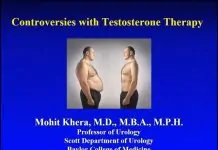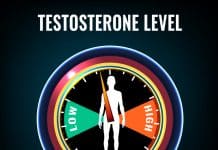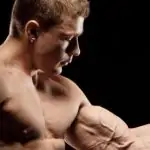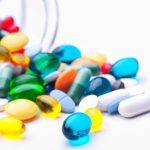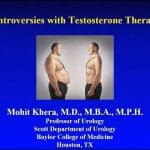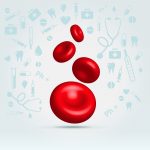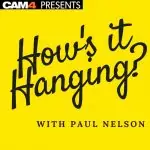Testosterone production, action, and clinical manifestations of testosterone deficiency.In the male body, the hypothalamus secretes gonadotropin-releasing hormone, or GNRH in a pulsatile fashion to stimulate the release of follicle-stimulating hormone, or FSH and luteinizing hormone or LH from the pituitary gland. LH travels in the bloodstream to the leydig cells of the testes, where it binds to the LH receptor and initiates a series of biochemical events that convert low-density lipoprotein or LDL cholesterol to testosterone. Testosterone secreted from the testes is carried by the bloodstream to target tissues where it produces its biological effects.
Failure of the testes to make physiological levels of testosterone is called hypogonadism. Hypogonadism due to abnormalities of the testes themselves is called primary hypogonadism, whereas a defect in the hypothalamic pituitary axis is termed secondary hypogonadism. Dual or mixed forms can also occur. If an insufficient amount of testosterone reaches the target tissues, manifestations of testosterone deficiency may appear in liver, muscle and adipose tissue. Testosterone binds directly to the androgen receptor. In the liver, testosterone enhances protein synthesis while in muscle, testosterone enhances muscle mass. Given its role in muscle, men with reduced levels of testosterone may complain of muscle weakness, lethargy or decreased energy.
In other tissues, testosterone must first undergo conversion before becoming biologically active. In the brain and bone, testosterone is converted by aromatization to estradiol, which then binds the estrogen receptor. Testosterone enhances bone development by promoting bone accretion. Men with reduced testosterone levels may develop osteoporosis. Testosterone acts in the brain to stabilize mood, enhance libido and may even have a positive effect on cognition. As a result, men with testosterone deficiency can experience mood changes, a lack of motivation, and reduced libido. To bind to the androgen receptor on skin, hair, gonadal and prostate tissues, testosterone is converted by 5-ᾳ-reductase to dihydrotestosterone, or DHT. Testosterone supports the growth of facial, body, axillary and pubic hair in the adult.
However, in some genetically susceptible men, testosterone may also inhibit hair growth in some areas of the scalp, leading to baldness. In the sexual organs, testosterone contributes to penile growth, spermatogenesis and prostate growth and function. Profound hypogonadism interferes with the vascular function of the penis, or corpora, and may lead to erectile dysfunction, and a decrease in orgasm quality. Other effects of testosterone include promotion of erythropoiesis and regulation of immune function. In summary, testosterone production plays a key role in many body tissues and testosterone deficiency can result in a myriad of clinical manifestations.
Recent Posts
What You Should Know About Weight Loss Supplements
What You Should Know About Weight Loss Supplements
It's a well-known fact: excess body weight can be seriously dangerous for your health!
Being obese or overweight...
Erectile Dysfunction Risk Linked To How Many Medications Are Taken
A study found that as the number of medications men took increased, so did the prevalence of ED, the authors reported - across all...
Testosterone Controversies: Lecture by Dr. Khera
Transcript of Part 1.
Nelson Vergel: Hello everybody, Nelson Vergel here...
Post PCT Bloodwork
This panel is designed to measure the health and recovery of the Hypothalamic-Pituitary-Testicular Axis (HPTA) after attempting to normalize it spontaneously or with the...
Insurance insiders say AI has not met expectations yet but still holds future potential
Viewpoint: Balancing the opportunities and risks of generative AI :: Insurance Day
Thanks to these capabilities, AI offers insurers significant benefits, including increased efficiency, cost...





